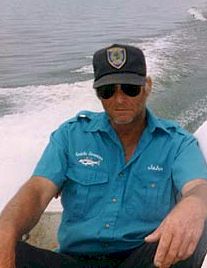Lakecaster Online Archives – May, 2000
Spring has all but left us, and our usual white bass bonanza is shortly ahead. As the white bass return from their journey, the first thing on their minds will be food. They eat shad, and it happens that the shad will be along the shorelines spawning. Hence, that’s where you’ll find yourself. The fish will not make it out into the main part of the lake just yet, as it will be mostly void of shad. That will come later in the month of May, or possibly even mid-June.
Working slabs around the many points the shoreline will pay off. These points are noted for early and late places, but I have caught fish from them at all times of the day, as long as there isn’t a lot of trolling going on. The excessive noise will cause the fish to move off to quieter surroundings. I can only suggest moving when the trollers move in on you, and it will happen. The eastern shoreline from Indian Hills to Kickapoo Creek has much likely structure as described.
Try and not get too close to these shallow points with the boat. Pull up far enough out that you can cover it with a good cast. This will put more fish aboard, providing they are in that locality. If not, move on after several casts to the next place. I call the “run and gun,” highly effective for covering a lot of ground. Rely more on the slab spoon than on the depth finder. You are fishing visible structure, so electronic aid is less needed.
Use the sonar to position the boat, by all means, but rely more on leaving yourself plenty of room to drop the anchor before the boat gets right on top of the place. The fish, although hungry, are going to be a bit spooky of boat traffic. If you are not alone, I will find it best to let another throw a bait in there, and I stand by with the anchor. This is the best way to gain proper position. Drop the anchor quietly.
As the shad complete their spawning rites, they will move to open water, and the white bass will go with them. At this time, the workable structure in the main lake will start giving up numbers of fish. The structures we classify as open water areas may be close to the shoreline. Start there first, and expand outward as the fish move. Soon, you’ll find yourself along the river channel where the whites spend most of their time.
If the water is off color, you must adjust your bait color accordingly. It is just a fact that yellow and chartreuse out perform the white slabs. True enough, there are times that white works as well, but never better, in water with less than ideal conditions. I have no white slabs, only yellow and chartreuse. On the average, size seems to make little difference to the fish, but my favored one is the 1-1/8 oz.
Using them is much akin to using a plastic worm, only it’s a bit faster. Maintain contact with this bait the entire time it’s in the water. Put your mind right down that line at the knot. Truly, I do not know of a more versatile, or productive bait for nearly any species.
Well, there it is. This is what’s happening on Livingston for the next thirty days or so for white bass. As this month expires, things may change, and we’ll up-date you in the next issue. For this month, we’ll be hugging the shoreline, but yet still OUT ON THE LAKE.
Copyright © 1999 – 2005 by Lakecaster Publications, Onalaska, Tx. All rights reserved. Usage rights granted to Toledo-Bend.Com





